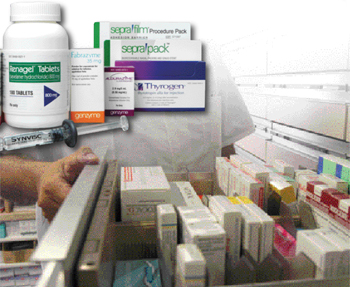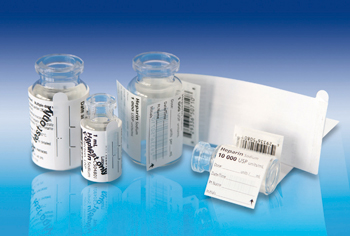Ethical and OTC products: packaging
FIGURES AND TRENDS The performance of a segment and packaging of various pharmaceutical forms. 2011 saw a mild slowdown in exports, while the Italian domestic market put in a good performance.
Plinio Iascone
The Italian pharmaceutical industry as a whole (ethical and OTC products, including products for hospital use and excluding veterinary drugs) in 2011 put in a turnover of around 26,912 million euros (Prometeia). During 2011 the growth trend that featured over the previous three years slowed down: more than anything else the drop involved exports, though figures were still positive, while the Italian domestic market featured an upturn: in times of a general crisis in consumption, this holding of the market can be ascribed to an aging population and the growing emphasis on prevention and quality of life.
The upturn seen over the last two years can be ascribed to the increasing number of pharmaceutical products provided under the Italian National Health System (SSN), set against a progressive decline in sales. This change is also in part due to the expiring of important patents, which have led to the opportunity to market products at a lower cost but with unchanged characteristics, distributed by the SSN. The exports of Italian pharmaceutical products continued their uptrend, driven primarily by sales to markets outside Europe. Exports to China, Russia and Turkey showed the highest growthrates. The prospects for the next two years are essentially good, supported largely by exports. Domestic demand should also continue to show growth, but at a lesser rate compared to the past, this due to SSN cost containment policies.

The percentages of a segment
Here follows a breakdown in terms of packs marketed: ethical products (products requiring a prescription) in classes A, B and C (SSN classification) comprise approx. 87% of packs marketed, other ethical products sold without prescription comprising 3% and OTC products accounting for the remaining 10%. As regards ethical and OTC drugs sold in pharmacies, in 2011 a “consumption” of 2,050 million units is estimated (+1% compared to 2010). Figures for liquid pharmaceutical forms (injectable, oral, ophthalmic, etc.) are seen to stand at 594.5 million packs, up 1,1% compared to 2010; 1,292 billion packs of solid form products (tablets, capsules, powders, etc..) were sold, putting in a +1%; figures for other types of products (ointments, gels, sprays, etc.) stand at 164 million, up 0.6%. The increase in sales of pharmaceuticals in liquid form is driven by injectables, as a result of the spread of vaccination against influenza. All forms of solid pharmaceuticals - oral products, powders for external use, rectal and vaginal products - have shown growth, albeit with slight differences. With regard to other pharmaceutical specialties, products in spray form and transdermal products also showed growth.
Packaging forms:
type and amount
Pharmaceutical packaging must aboveall satisfy primary functions: protect the product, ensure the absence of negative interactions between the container and the product, make it easy and practical to use, but at the same time prevent tampering and improper use, for example, by children.
The choice of packaging is also closely related to the type of product (liquid, solid, sprays etc..), but also to the characteristics of the substances present in the product.
In 2011, for the different types of drugs 2,050 million packs were produced, +1% compared to 2010.
Blistered products confirm an overall share of 55.6% and remain the most used part of the field of solid products for oral use (now totalling approx. 93%).
Following this, glass packaging (19.6% overall share) predominates as regards pharmaceutical products in liquid form, in particular injectables.
Overall plastic packaging accounts for an 18.8% share of the market, figures being substantially stable compared to 2010; however a drop in traditional multidose flacons is seen in favour of single dose flacons, seen to be on the increase (both containers and sachets).
To better illustrate the situation of the different types of packaging and their growth trend it is helpful to analyse the performance of the three pharmaceutical product families, ie liquids, solids and varied, and the different types within the same.
Products in liquid form (oral, injectable and other non-drinkables). Glass remains fairly stable at 63%, while the use of single dose vials is increasing, set against the decrease of mutidose vials. The plastic flacon is stable at 34% and the single dose laminate sachet having reached a share of 3%, with good growth potential.
With regard to injectables, the 47% tubular glass and 53% hollow glass vial ratio is seen to be stable.
With regard to the broader category of "non drinkable" liquid products consisting of ophthalmic, otological products etc.., packaging is 93% in plastic flacons (4.5% in single-dose sachets or vials) and 2.5% in glass flacons. The packaging mix has stabilised for the time being, but the monodoses show the highest growth potential.
Products in solid form (oral, powders for external use) and for vaginal-rectal use.
For products to be administered orally (granules, tablets ...), the blister confirms its total predominance (approx. 93%). The only real competitor is the polylaminate sachet (2.5%); other packaging (4.5%) in plastic, glass or cellulose showed a downturn.
With reference to products for external use, for powders the two main types of packaging are the multidose containers in aluminium and plastic, respectively accounting for 42% and 50%.
polylaminate monodose sachets show an upward trend, currently accounting for a share of 8%.
Drugs for vaginal-rectal use are primarily offered for sale in either plastic honeycombs or microclisms.
The "various products" heading comprises three categories: transdermal products, creams (gels, creams and foams) and pharmaceutical products in spray form. The former are packed in multilayer strips made up of paper, aluminium and polyethylene.
Ointments and gels are packed in flexible aluminium tubes (66%) and single dose flexible polylaminate sachets (10%).
Pharmaceuticals in spray form are 81% packed in aluminium spray cans (steel is almost absent); the remaining 19% is accounted for by plastic bottles with dispenser.
The major changes in the packaging mix can be put down to the performance of the various pharmaceutical forms (drinkable liquids, injectables, solid dosage forms, etc....). The characteristics of the "pharmaceutical product" slow down the changes in primary packaging, also in view of the fact that any change must be authorized by the Italian Ministry of Health.
Pharmaceutical packaging also covers secondary packaging (cardboard cartons, which not only protect the product but also contain the leaflet) and transport packaging (corrugated cardboard boxes, pallets, stretchfilm etc…).
Plinio Iascone
Istituto Italiano Imballaggio

















